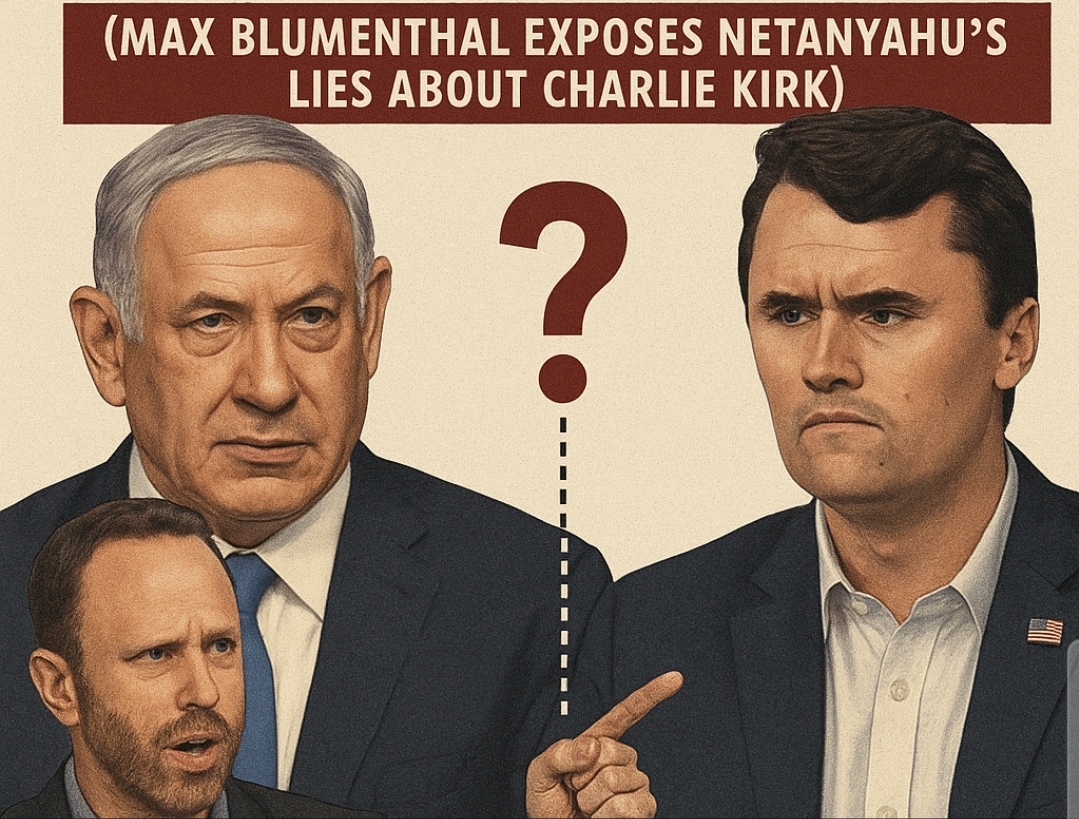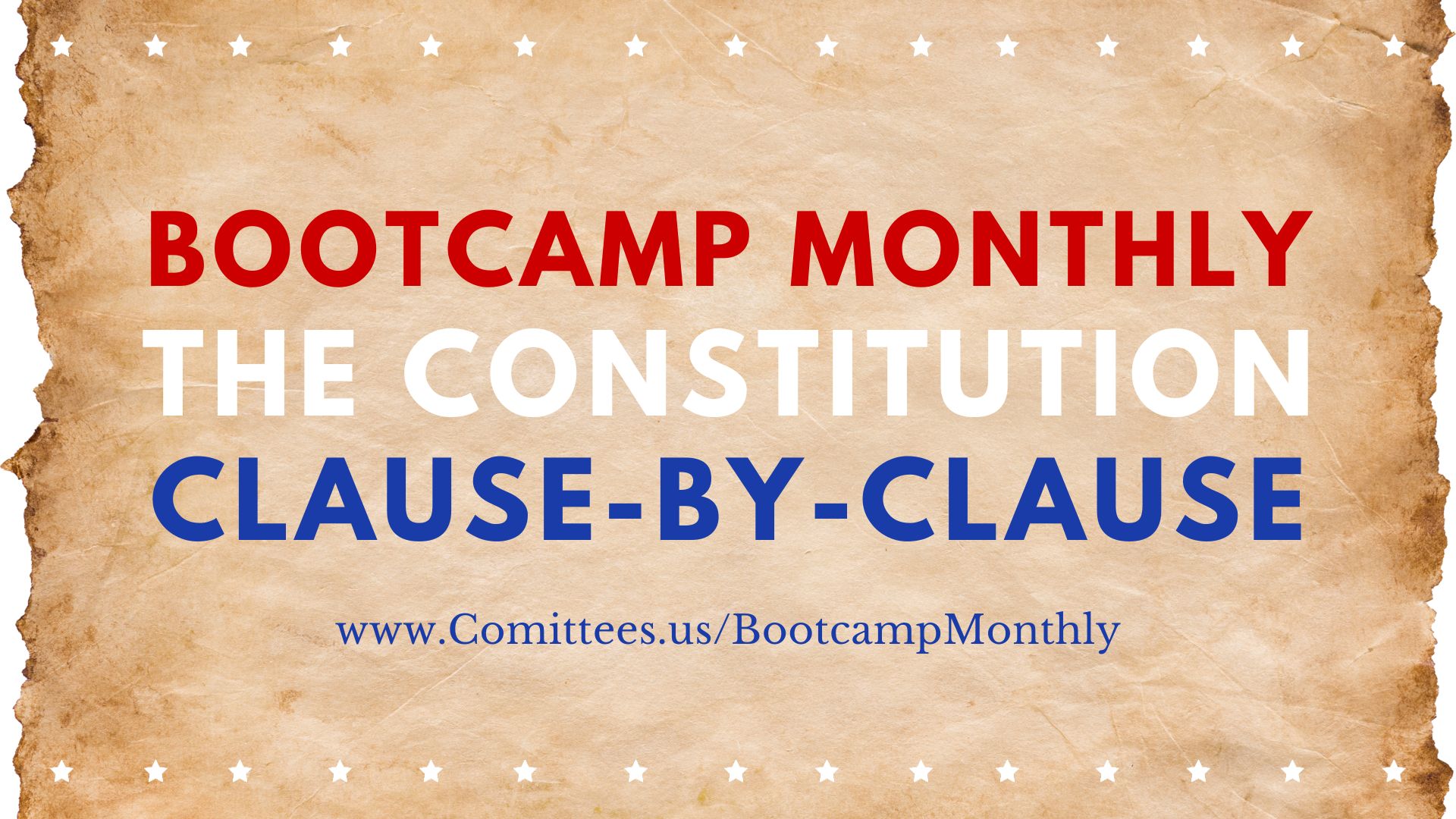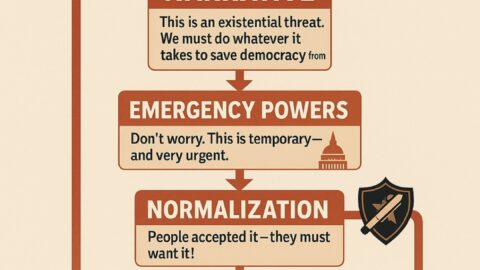Introduction
The Liberty Vault interview with Max Blumenthal spotlights a collision of agendas: Benjamin Netanyahu’s rapid bid to claim Charlie Kirk’s legacy; a conservative influencer ecosystem splintering over Israel; and an FBI case riddled—at minimum—with perception problems. This article synthesizes the interview’s claims, counterclaims, and open questions to clarify what’s known, what’s contested, and why it matters.
The Moment After: Speed, Symbol, and Spin
Within roughly forty minutes of the September 10 shooting, Netanyahu offered public prayers for Charlie Kirk. Whether “minutes” or “39 minutes,” the speed was striking. More striking was the framing: Netanyahu immediately cast Kirk as an ally of Israel—before facts, context, or grief had room to breathe. The optics suggested a race to stabilize a narrative, not simply to mourn a death.
Why that matters: When a foreign leader moves this quickly to define an American political figure’s legacy, it signals stakes well beyond condolence—stakes in a base (conservative evangelicals) and a storyline (Israel as moral North Star) that’s been fraying with younger conservatives.
Two Charlies: Public Compliance vs. Private Contempt
Blumenthal’s core claim: Kirk privately detested Netanyahu, considered calling for his resignation, and felt besieged by pro-Israel donors to toe the line. Publicly, Kirk still amplified familiar pro-Israel messaging (questioning Gaza imagery, downplaying genocide allegations). Privately, he was said to be recoiling from Netanyahu’s influence and the expectation that Israel criticism equals career suicide.
Why that matters: If true, it reveals a classic dissent trap—public orthodoxy masking private disillusion—and explains the urgency to sanctify Kirk as steadfastly pro-Israel after his death.
The Letter, the Invite, and What’s Left Unsaid
Netanyahu promoted a personal letter from Kirk and noted an invitation to visit Israel, lamenting it would never happen. Sources cited by Blumenthal contend Kirk declined the trip. That crucial detail—acceptance vs. refusal—was left ambiguous in Netanyahu’s videos.
Why that matters: A declined propaganda tour conflicts with the “devout ally” portrayal, weakening efforts to retroactively fix Kirk’s image inside the pro-Israel fold.
The Hamptons Summit: When Influence Ops Backfire
Greyzone reporting described a secret “influencer summit” in the Hamptons, convened by billionaire Netanyahu ally Bill Amman, to corral U.S. creators into generating pro-Israel impressions. What should have been seamless message-discipline devolved, with donors berating Kirk and a high-profile Zionist activist allegedly shouting him down. Candace Owens later corroborated key elements, escalating donor panic and smear campaigns against Greyzone and Owens.
What the segment says happened
- The set-up (as reported by The Greyzone and recapped on Liberty Vault): A private “influencer summit” in the Hamptons, hosted by billionaire Netanyahu ally Bill Amman (name/spelling as used in the segment), aimed to align U.S. creators around pro-Israel messaging. Invitees allegedly included high-reach podcasters and media figures, with an ask to generate measurable “impressions.”
- The playbook: curated briefings, suggested talking points, offers of access and trips, and a KPI frame (“Here’s the content we’d like to see, here’s how we’ll count it”).
- The breakdown: According to the clip, the room turned combative. Donors berated Charlie Kirk, and a prominent Zionist activist allegedly shouted him down. Instead of a smooth pledge-drive for message discipline, it became a scene of pressure and resentment.
- Aftershocks: Candace Owens later corroborated key elements (the pressure, the tone, the donor expectations) on her show, which the segment says amplified donor panic and kicked off smear campaigns targeting both The Greyzone and Owens.
Why that matters: It’s a candid look at modern influence operations: moneyed patrons, curated trips, metrics targets—and the blowback when targets balk.
- It’s a candid window—again, as claimed in the video—into modern influence operations: moneyed patrons, curated talking points, access incentives, and metrics.
- It also shows the blowback risk: when creators resist, the “alignment meeting” becomes Exhibit A for claims of donor capture and narrative control, especially on a movement premised on free speech and grassroots authenticity.
- The episode frames this as a fault line on the right: youth audiences drifting toward restraint vs. a donor class demanding Israel-first message discipline.
Receipts the segment points to (and what would firm them up)
- What it references: contemporaneous texts/DMs about the summit’s tone, first-person accounts of donor outbursts, and later on-air confirmations by Owens.
- What would nail it down:
- A guest list and agenda (with briefing decks or talking-point sheets).
- Emails/DM invites describing expected deliverables or KPIs.
- Travel logs/itineraries tied to the event.
- On-record statements from multiple attendees describing the same confrontation.
- Any post-event donor communications that conditioned funding on content.
How it feeds the larger storyline
- The summit becomes the set piece for the episode’s thesis: attempts to “own the narrative” around Israel, and later around Charlie Kirk’s memory, are running into a rising receipts culture (texts, timelines, leaked decks).
- It also explains the post-mortem scramble the segment describes: a rush to canonize Kirk as unwaveringly pro-Israel vs. counter-claims (from Owens, Tucker, Dave Smith) that he was supportive but skeptical of Netanyahu and increasingly resistant to donor diktats.
Civic takeaways the segment urges
- Disclosure: Creators should say when briefings, travel, or access are sponsored—and by whom.
- Separation of powers: Donor access shouldn’t buy editorial vetoes; movements need firewalls between funding and content.
- Document or demur: If you’re alleging pressure, bring timestamps, emails, clips—or label it clearly as opinion/experience.
- Expect blowback: Influence campaigns can backfire when targets balk; transparency and pluralism are better long-term than message lockstep.
Netanyahu’s Base Problem: “Israel’s Safety Belt in the Bible Belt”
Blumenthal argues Israel’s last indispensable reserve of U.S. support—white evangelical conservatives—is eroding among younger voters. Kirk’s TPUSA apparatus was designed to shepherd that cohort. His drift, even if private, threatened the pipeline. Hence the rush to enshrine him as a martyr-ally and to crush dissenting influencers who might validate skepticism.
Why that matters: The fight is strategic, not sentimental. If younger conservatives detach, Washington’s reflexive deference to Israel becomes harder to sustain.
The FBI Case: Evidence, Anomalies, and Credibility Gaps
The alleged shooter, Tyler Robinson, is presented with a mix of inculpatory claims and procedural oddities:
- Clothing changes & Dairy Queen photo: Hours after the shooting, a photo surfaces showing Robinson calm, partially matching outfits, and unmasked—suggestive to some of implausible nonchalance, to others of guilty normalcy.
- The texts: Language like “retrieve the vehicle” and “drop point,” no timestamps in charging docs, and references to “reconstructed” messages fuel suspicion. Critics counter that falsifying carrier-verifiable texts would detonate the prosecution’s case at trial.
- Footage gaps: Stairs-camera stills exist, but full videos haven’t been publicized. Rooftop footage is grainy; debates rage over what’s in the suspect’s hands.
- Ballistics fog: Conflicting statements about a recovered bullet; surgeon remarks about unusual bone density; no public autopsy. Without ballistics clarity, caliber and trajectory theories multiply.
- DNA on a screwdriver: The FBI says Robinson’s DNA was found on a tool used to assemble a disassembled rifle. Defense has not publicly contested this—yet uncertainty remains until trial.
Why that matters: Even if the facts ultimately align, information-management missteps (missing timestamps, partial footage, shifting storylines) corrode trust—especially in a political murder with international reverberations.
Competing Timelines and the Rifle Question
Early skepticism centered on whether Robinson had time to assemble the rifle and fire accurately. Demonstrations suggest assembly in under two minutes is feasible. The charging document’s timeline (minutes on the roof before the shot) doesn’t preclude that. Still, absent a public autopsy and full video, the debate won’t die.
Why that matters: Technical plausibility doesn’t equal narrative credibility. In high-salience cases, the burden is not merely to be correct—it’s to be convincingly, transparently correct.
What We Know vs. What We Don’t
Likely/Reported:
- Netanyahu moved quickly to frame Kirk as a devoted Israel ally.
- Kirk faced heavy donor pressure over platforming Israel critics (e.g., Tucker Carlson, Dave Smith).
- A donor-driven influencer push was underway; it ran into resistance and public blowback.
- The FBI presents DNA, texts (reconstructed), and limited video; defense silence on some points may be tactical and temporary.
Unknown/Contested:
- Whether Kirk definitively refused Israel’s invitation.
- Full, timestamped text logs and unedited stairwell/roof videos.
- Autopsy/ballistics details and the final disposition of the bullet.
- The ultimate integrity of the FBI’s evidentiary chain.
The Stakes
This is not only about “who shot Charlie Kirk.” It’s about:
- Narrative Sovereignty: Who decides what Charlie Kirk stood for—the man’s own evolving views, or the interests that benefited from his earlier positions?
- Influence Infrastructure: How billionaire-funded networks cultivate, discipline, or destroy dissenting conservative influencers.
- Institutional Trust: How opaque evidence handling fuels conspiracies—and how authorities often create the conditions for disbelief.
- Foreign Policy Futures: If younger conservatives decouple from reflexive Israel support, U.S. Middle East policy may face its most serious generational challenge in decades.
Conclusion: Control vs. Credibility
Blumenthal’s account depicts Netanyahu in triage mode: sanctify Kirk, suppress dissent, stabilize the base. Even if prosecutors ultimately prove their case against Robinson, the public-facing gaps—missing timestamps, partial video, ballistics ambiguity—undercut confidence. In a nation already suspicious of elite narrative-crafting, the fastest route to stability isn’t spin; it’s receipts.
1. Opening Context
- Blumenthal describes Charlie Kirk’s “private transformation” where he began personally detesting Netanyahu.
- Netanyahu immediately weighed in after Kirk’s death, posting prayers and claiming his legacy within minutes of the shooting.
- Netanyahu’s obsession was framed as an attempt to control Kirk’s memory and maintain pro-Israel influence over the U.S. right.
2. Netanyahu’s Rapid Reaction
- Blumenthal notes Netanyahu issued statements almost instantly after Kirk was killed.
- Reality check: Netanyahu’s public message came 39 minutes later — not literal “minutes,” but still unusually fast.
- Raises suspicion: why such urgency to shape the narrative before the body was even cold?
3. Kirk’s Private vs. Public Stance
- Publicly: Kirk still posted pro-Israel material, e.g., doubting Gaza imagery, denying genocide.
- Privately: he loathed Netanyahu, felt bullied, and considered calling for his resignation.
- He faced enormous donor pressure (Zionist billionaires close to Netanyahu) to stay in line.
- Blumenthal stresses this tension: private dissent vs. public compliance.
4. Trump Administration Links
- Netanyahu allegedly hand-picked Trump cabinet members (Rubio, Waltz, Huckabee, etc.).
- Kirk resented Netanyahu’s influence in U.S. politics.
- Max frames Netanyahu as a bully who dictated personnel choices.
5. The Letter & Invitation
- Netanyahu referenced a personal letter from Kirk and an invitation to Israel.
- He publicly lamented that Kirk “would never get to visit.”
- Sources told Blumenthal Kirk rejected the trip, suggesting Netanyahu deliberately skirted that fact.
6. Armageddon Narrative
- Blumenthal argues Netanyahu needed Kirk as a symbol to keep U.S. evangelicals (MAGA base) in line for wars with Iran, Syria, Iraq.
- Israel’s strategy requires Christian nationalist support for perpetual Middle East wars.
- Kirk was a valuable “gentile asset” until he drifted.
7. The Secret Hamptons Summit
- Greyzone exposed a secret influencer summit organized by Netanyahu’s billionaire ally Bill Amman.
- Purpose: recruit U.S. influencers for pro-Israel propaganda tours.
- The event collapsed into a disaster when donors berated Kirk.
- Natasha Heddorf (UK Zionist lawyer) allegedly screamed at him.
- Candace Owens later confirmed details, causing meltdown in Zionist donor circles.
8. Backlash Against Candace Owens
- After Greyzone’s reporting, Owens was smeared and targeted.
- Pro-Israel operatives tried to destroy her credibility.
- Claims circulated that Greyzone was funded by Iran — a disinformation tactic.
9. Netanyahu’s Denials
- Netanyahu bizarrely declared twice: “I did not kill Charlie Kirk.”
- Blumenthal stresses: no one accused him of direct murder.
- Raises suspicion: why proactively deny?
- Netanyahu tried to recast Kirk as a hero for Israel.
10. Israel’s Assassination Record
- Israel has a long history of assassinations (decades documented in public sources).
- This fuels suspicion whenever high-profile critics die under murky circumstances.
- Recent examples: killings in Doha of hostage negotiators.
11. Panic Mode
- Netanyahu and the Zionist lobby are in panic because their last strong base — white evangelical Christians in the Bible Belt — is eroding.
- Younger conservatives are increasingly skeptical of Israel.
- Kirk symbolized that generational drift.
12. FBI Narrative Problems
- The alleged shooter, Tyler Robinson, presented with many inconsistencies:
- Clothing changes before/after shooting.
- Dairy Queen photo hours later showing him calm and unafraid.
- Text messages with odd, formal language (“retrieve the vehicle,” “drop point”), reconstructed without timestamps.
- FBI admitted the manifesto was “destroyed” and reconstructed — fueling suspicion.
- Blumenthal & Owens highlight contradictions in timeline, evidence handling, and withheld footage.
13. Ballistics & Autopsy Confusion
- Conflicting reports about the bullet:
- Some say it wasn’t recovered.
- Others (TPUSA spokesman) say it was recovered under the skin.
- Surgeon reportedly said Kirk’s bone density made him “like a man of steel,” raising questions about how the bullet behaved.
- Autopsy remains private, keeping key details from public scrutiny.
14. Rifle Assembly & DNA Evidence
- Critics doubted whether Robinson had time to assemble the rifle.
- Demonstrations showed it could be done in under two minutes.
- FBI claims Robinson’s DNA was found on a screwdriver used for assembly.
- Defense hasn’t disputed the DNA evidence — but questions remain whether it was planted.
15. The Larger Meaning
- Blumenthal concludes:
- Netanyahu tried to erase Kirk’s private dissent and rebrand him as a loyal pro-Israel martyr.
- The panic shows Israel is losing control of the U.S. right.
- The FBI case contains serious inconsistencies, making comparisons to JFK inevitable.
- Support for Israel may collapse within a decade, altering U.S. foreign policy drastically.
Summary Takeaway:
Blumenthal frames Netanyahu’s reaction as a desperate attempt to control both Charlie Kirk’s legacy and the evangelical base’s loyalty to Israel. The FBI narrative around Robinson raises serious credibility issues, while the broader theme is the slow collapse of unconditional pro-Israel sentiment among younger conservatives.







